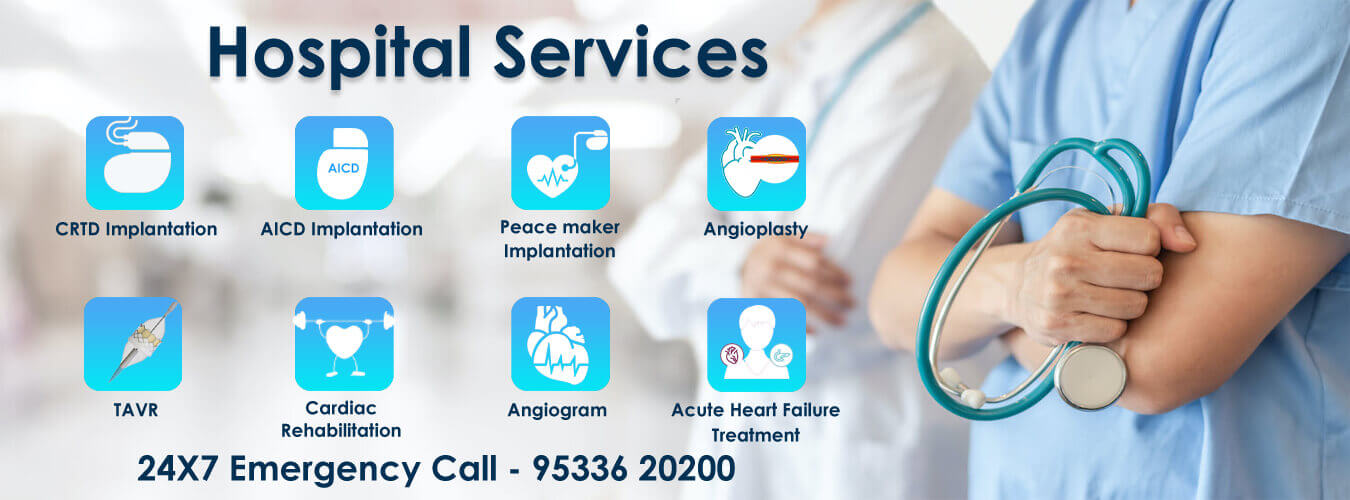Call us for any question
9533620200, 8179002888Meds Super Speciality Hospital
MallepallyTimings: 7 pm to 10 pm
mohammed4248asif@gmail.comCoronary Angiogram in Hyderabad

Coronary Angiogram in Hyderabad
Cardiac Catheterization also called cardiac cath, or coronary angiogram in Hyderabad , is an invasive imaging procedure that performs heart function evaluation. Cardiac Cath is used to:
- Assess the presence of coronary artery disease, valve disease or aortic disease
- Assess the purpose of heart muscles
- Find the requirement for further treatment of CABG, coronary artery bypass graft
With the process of cardiac cath, patients find relief from heart defects.
What is Cardiac Catheterization?
A cardiac catheterization (also called cardiac cath, heart cath, or coronary angiogram) is a procedure used to measure the pressure and blood flow in and around the heart. It can also be used to treat certain types of heart disease. In this procedure diagnose or treat certain heart conditions, such as clogged arteries or irregular heartbeats. For example, if you have irregular heartbeats (arrhythmias), chest pain (angina), or heart valve problems, your doctor may recommend this procedure.
You may have a cardiac cath if you have recently had 1 or more of these symptoms:
- • Chest pain (angina)
- • Shortness of breath
- • Dizziness
- • Extreme tiredness
During a cardiac catheterization, your doctor may:
- • Check the pressure in your heart's four chambers.
- • Analyse the contractions of your heart's chambers.
- • Collect blood samples to determine the oxygen levels in each chamber.
- • Look for problems with your heart's valves or chambers.
- • Biopsy a small piece of heart tissue
Cardiac catheterization may be done during the diagnosis or treatment of:
- • Coronary artery disease
- • Congenital heart disease
- • Heart failure
- • Heart valve disease
- • Micro vascular heart disease
Common uses of cardiac catheterization:
A cardiac cath can be used by your Heart Specialist in Hyderabad
Angioplasty:
Angioplasty: A catheter with a tiny balloon at the tip is inserted by your doctor.
When this balloon is inflated, it pushes plaque out of your artery and widens it.
Biopsy:
Your doctor takes a small tissue sample from your heart.
Repair of heart defects:
Your doctor seals a hole in your heart or stops a valve leak.
Stent placement:
To help keep your artery open, your doctor inserts a tiny mesh tube known as a stent.
Valve replacement:
To replace a faulty aortic valve, your doctor may perform a minimally invasive procedure known as Transcatheter Aortic Valve Replacement (TAVR).
Diagnosis for Cardiac Catheterization:
Ask your Best cardiologist in Hyderabad, if you have completed or scheduled all of the necessary tests prior to your cardiac catheterization procedure. These may include some of the following:
- • Blood tests
- • Electrocardiogram (EKG).
- • X-ray of the chest
- • Echocardiogram.
- • Heart MRI
- • MRI of the heart.
- •Stress Test
Cardiac catheterization procedure:
- • Top Cardiologist in Hyderabad will inject a numbing medicine underneath your skin with a small needle. They’ll insert a plastic introducer sheath (a short, hollow tube through which they place the catheter) in a blood vessel in your arm, neck or groin. Then they’ll insert a catheter through the sheath and thread it to your heart’s arteries. You may feel pressure when your provider puts in the introducer sheath or catheter, but you shouldn’t feel pain. Tell your provider if you do.
- • To help position the catheter, your provider may ask you to turn your head or take a deep breath and hold it for a few seconds.
- • When the catheter is in place, your provider will dim the lights and inject a small amount of contrast material through the catheters into your arteries and heart chambers. The contrast material outlines the vessels, valves and chambers.
- • When the contrast material goes into your heart, you may feel hot or flushed for several seconds. This is normal and will go away in a few seconds.
- • Your provider will use an X-ray camera to take photographs of your arteries and heart chambers while the contrast is flowing through them. You may need to hold your breath while your provider takes the X-rays. When all the photos are done, your provider will remove the catheter and turn the lights on.
- • The sheath has to be removed very carefully because pulling it out incorrectly can cause you to bleed. Your provider will ask you to keep as still as you can while they remove the sheath.
How long does a cardiac catheterization last?
The procedure itself takes about 30 minutes, but the preparation and recovery time adds several hours to your appointment time (five to nine hours or longer). You should plan on spending the entire day at the hospital for your procedure. If your doctors decide to perform an intervention, such as an angioplasty, it may take a few hours.
What Are the Risks of Cardiac Catheterization?
A cardiac catheterization is generally risk-free. However, there are risks associated with any procedure that involves entering your body. Your doctor will go over the risks with you and take precautions to reduce the chances of having them.
Risks can include:
- • A blood vessel has a hole in it (perforation)
- • Embolism of the lungs (when air gets into your blood vessel; this can be deadly)
- • Allergic reaction to dye
- • Bleeding
- • Clots in the blood
- • Bruise
- • The heart attack
- • Infection
- • Kidney damage caused by dye
- • Stroke
- • Uneven or irregular heart rhythm (arrhythmia)
Cardiac catheterization is safe for most people. Problems following the procedure are rare but can include bleeding and blood clots. Our Doctor Dr.MD Asif Interventional cardiologist in Hyderabad will monitor your condition and may recommend medicines to prevent blood clots.




